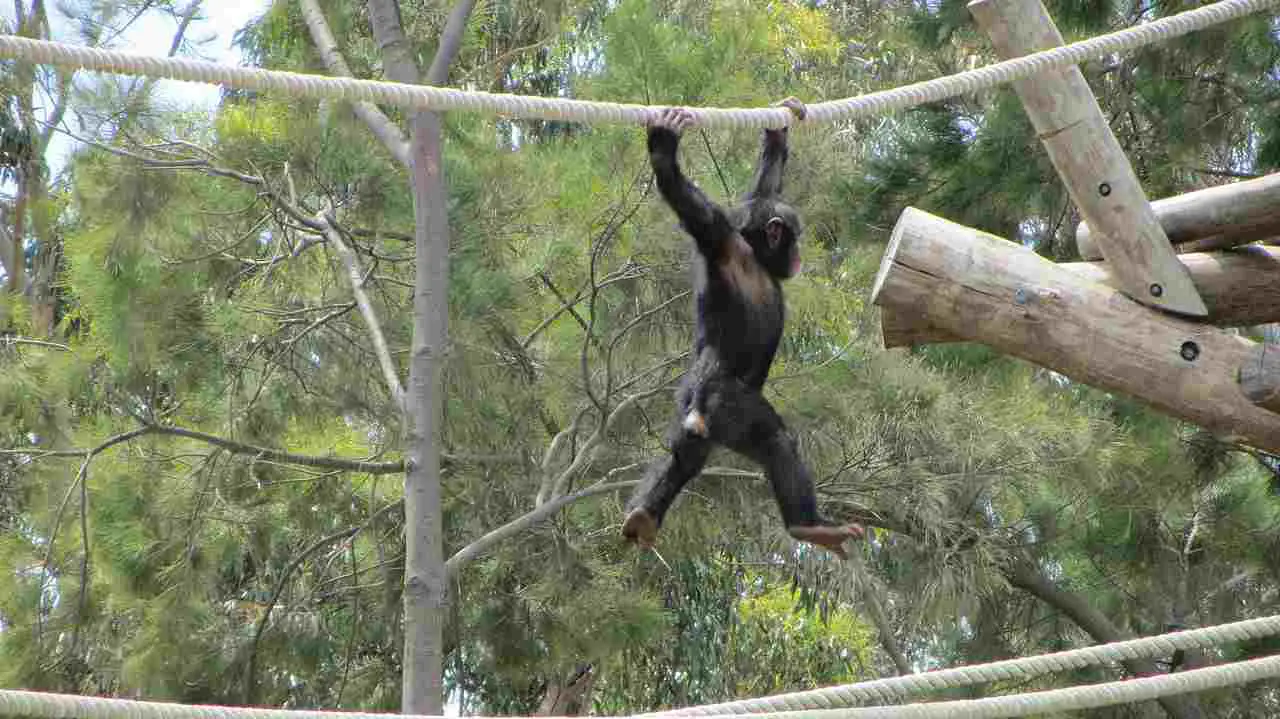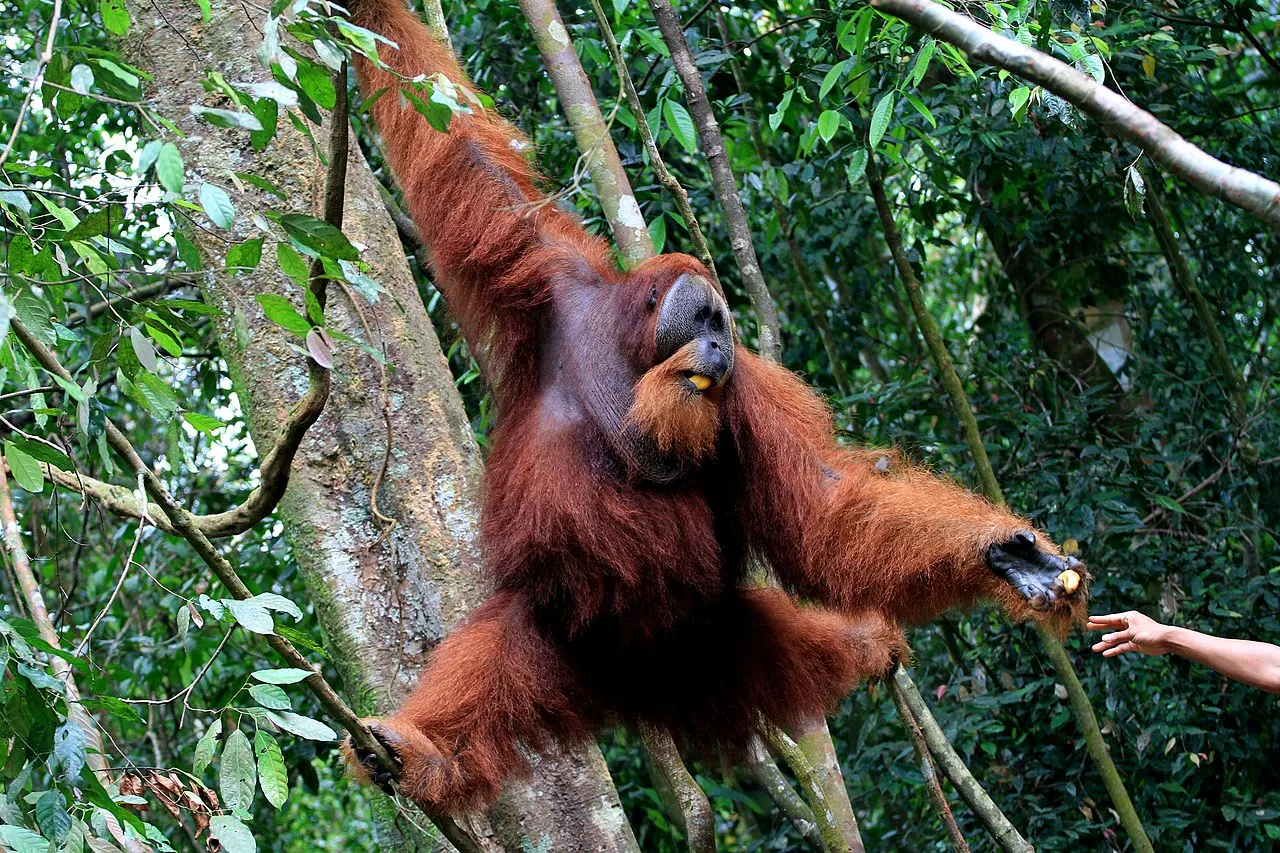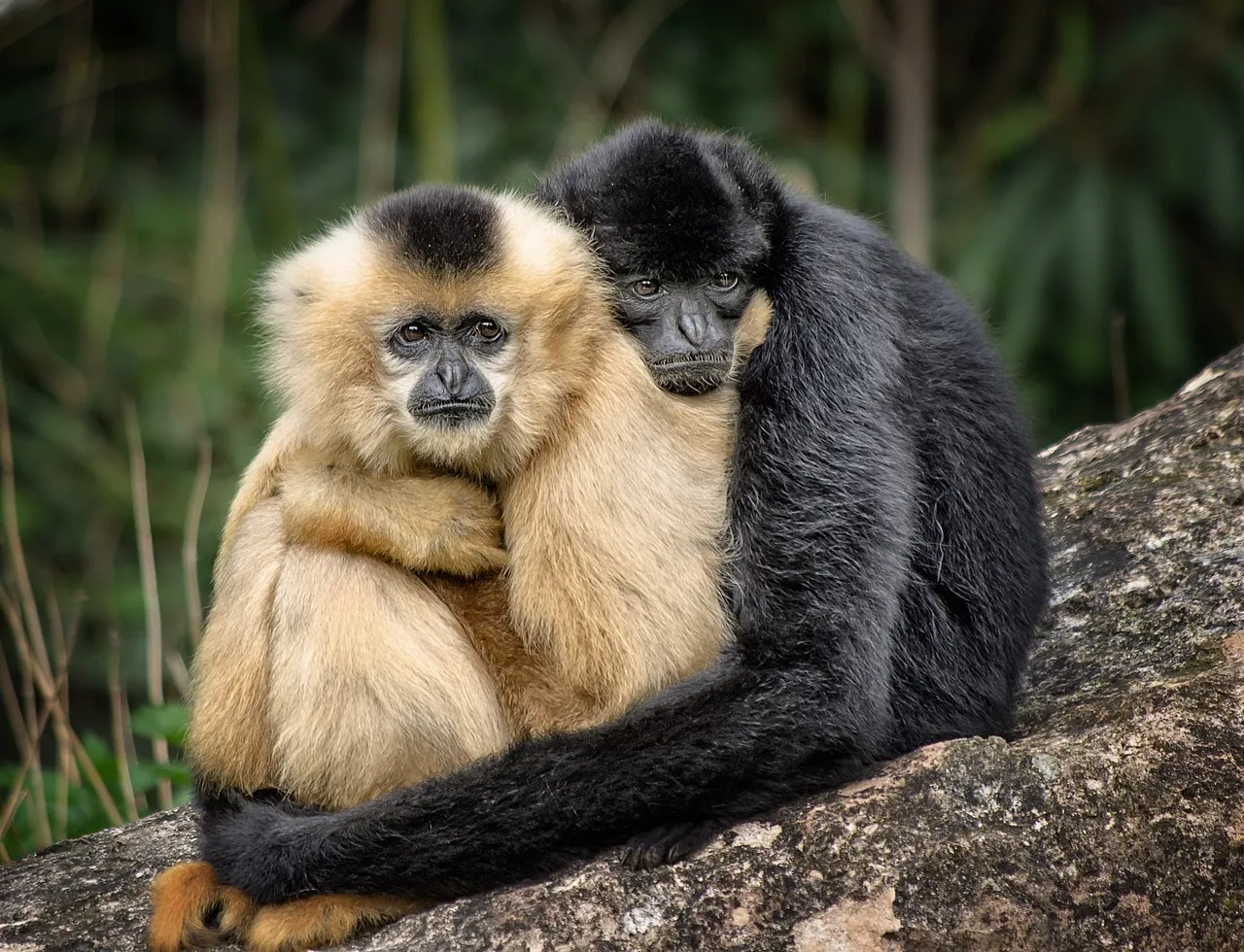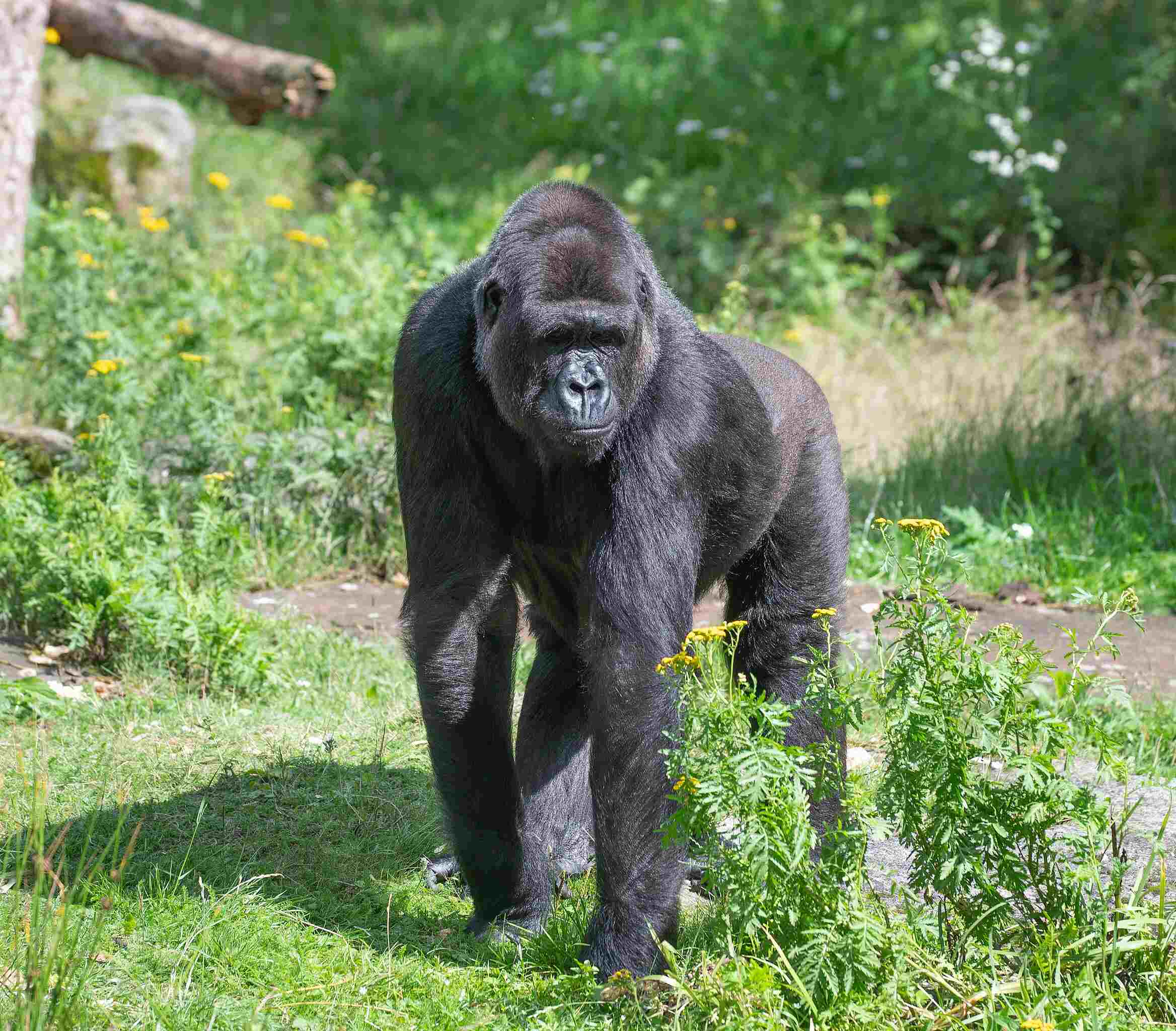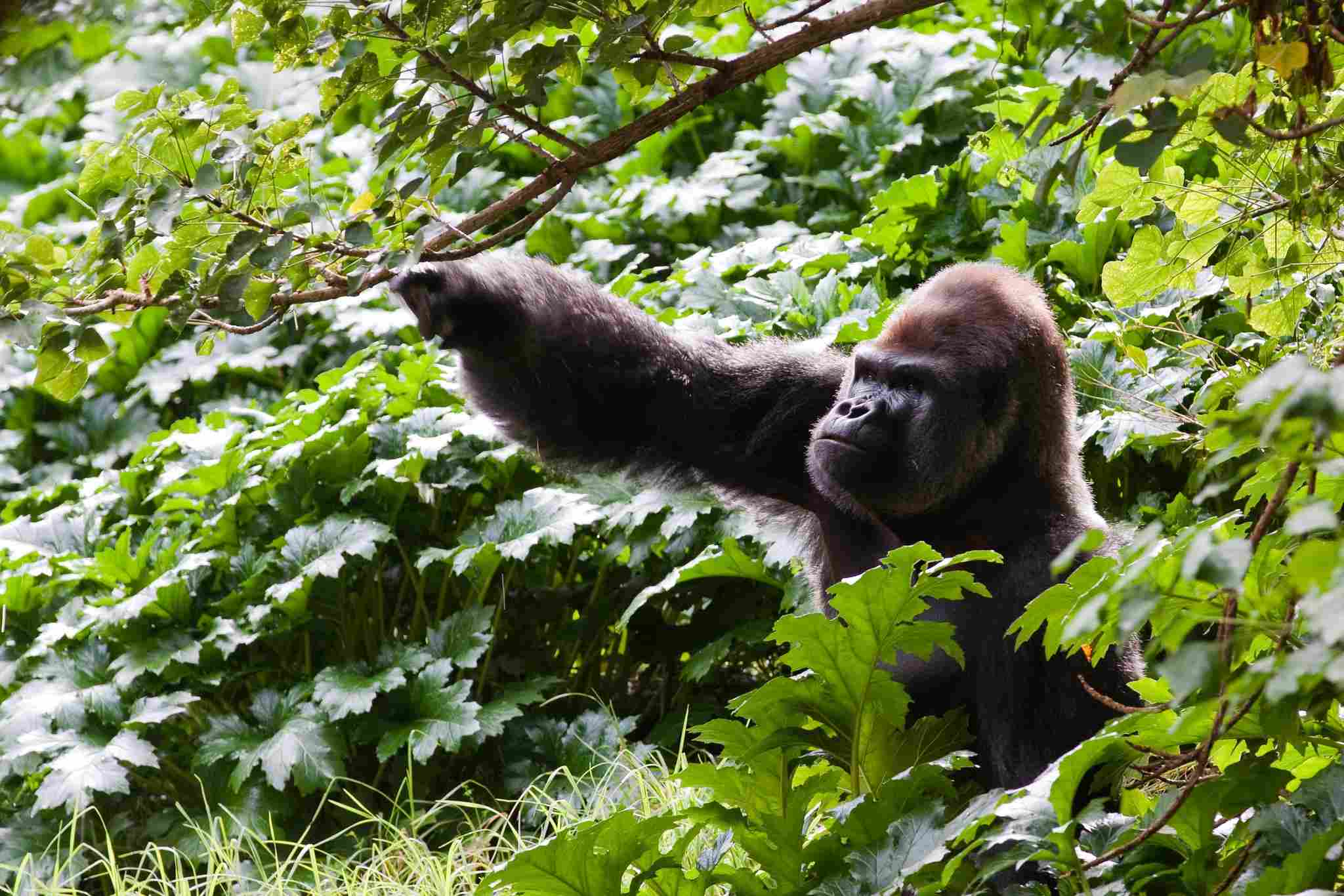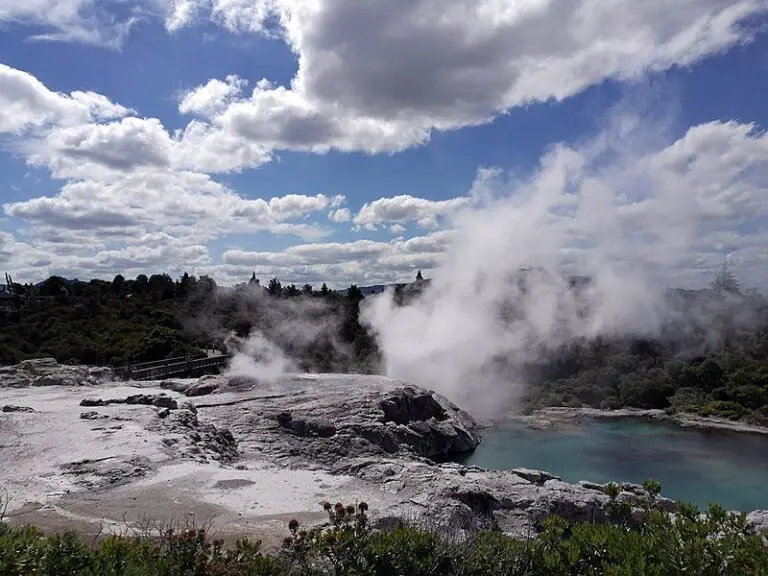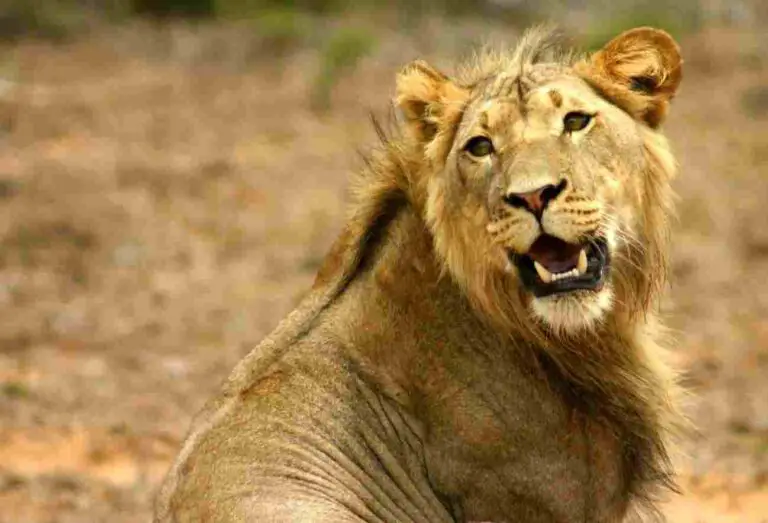Gorilla Vs Orangutan Size, Strength, Overall Comparison
Gorillas and orangutans, both members of the great ape family, exhibit fascinating variations in biological and physical traits. Gorillas, epitomizing strength, thrive in dense forests, while orangutans, with their unique characteristics, navigate diverse habitats. This examination delves into taxonomy, appearance, size, weight, strength, agility, and aggressiveness to assess the potential outcome of a one-on-one confrontation between a gorilla and an orangutan.
Gorilla vs Orangutan: Who Will Win in a Fight/Physical Confrontation?
In a one-on-one confrontation, a lone gorilla is likely to overpower a solitary orangutan due to its significantly larger size, greater weight, superior strength, and heightened aggressiveness.
I). Size and Weight Advantage:
– Gorillas, being significantly larger and heavier than orangutans, establish a considerable advantage in one-on-one confrontations, leveraging their size for dominance.

II). Strength Advantage:
– The sheer strength of gorillas surpasses that of orangutans, providing them with the physical prowess needed to overpower their counterparts.
III). Aggressiveness Advantage:
– Marked by a more aggressive nature, gorillas outmatch orangutans in confrontational scenarios, showcasing a formidable demeanor that contributes to their success.
While the orangutan is more agile, it lacks the strength to counter the advantages of the gorilla.
IV). Agility:
– Orangutans exhibit greater agility, but this trait alone may not be sufficient to compensate for the significant size and strength difference in a one-on-one confrontation.
*Details of Comparison
| Category | Gorilla | Orangutan |
| Taxonomy | Family: Hominidae; Genus: Gorilla |
Family: Hominidae; Genus: Pongo
|
| Appearance | Robust, dark hair; sagittal crest in males |
Shaggy reddish-brown hair; cheek pads in males
|
| Size | Larger, especially in males | Smaller overall |
| Weight | Heavier, especially in males | Lighter overall |
| Bite Force | Strong, adapted for vegetation crushing |
Strong, adapted for a varied diet
|
| Offensive Advantages | Dominance displays; vocalizations |
Cheek pads in males; vocalizations
|
| Defensive Advantages | Group defense; physical strength |
Arboreal agility; solitary lifestyle
|
| Speed | Limited ground speed; prefer walking |
More agile in trees; slower on the ground
|
| Agility | Adapted for terrestrial; limited agility |
Exceptional in trees; strong limb flexibility
|
| Overall Physical Capacity | Ground-based strength; power | Arboreal agility |
| Habitat Preference(s) | Forests and swamps; terrestrial and arboreal |
Tropical rainforests; predominantly arboreal
|
| Tracks | Knuckle-walking; distinctive prints |
Arboreal prints; gripping toe arrangement
|
| Lifespan | 35-50 years in the wild; longer in captivity |
35-45 years in the wild; similar or longer in captivity
|
| Feeding | Primarily herbivorous; selective feeding |
Omnivorous; varied diet based on fruit availability
|
| Social Behavior | Complex groups led by silverbacks |
Generally solitary; occasional social interactions
|
| Reproduction | Polygynous mating; longer interbirth interval |
Solitary mating encounters; lengthy interbirth interval
|
| Parental Behavior | Strong maternal care; active silverbacks |
Strong maternal care; limited paternal involvement
|
| Proximity to Humans | Some near human settlements; vulnerable to conflict |
Generally in remote areas; threatened by habitat loss
|
| Behavior Toward Humans | Typically shy; may exhibit defensive behaviors |
Generally avoidant; may become aggressive if threatened
|
| Danger Posed to Humans | Low danger; non-threatening unless provoked |
Low danger; aggression if feeling threatened
|
| Precautions | Conservation focuses on habitat protection; tourism guidelines |
Similar conservation strategies; emphasize minimal disturbance in tourism
|
Key Points:
- Both gorillas and orangutans belong to the Hominidae family but differ in genera (Gorilla and Pongo, respectively).
- Gorillas are larger and heavier, with a robust build, while orangutans have distinctive shaggy hair and facial features in males.
- Gorillas emphasize terrestrial strength, while orangutans excel in arboreal agility.
- Dietary differences: Gorillas are primarily herbivorous, while orangutans have a more varied omnivorous diet.
- Gorillas have complex social structures, whereas orangutans are generally solitary with occasional social interactions.
- Reproductive strategies differ, with gorillas following a polygynous mating system, while orangutans engage in more solitary mating encounters.
- Gorillas have active silverbacks contributing to parenting, while orangutan males have minimal involvement.
- Both species face threats from habitat loss due to human activities and require tailored conservation strategies for survival.
1. Taxonomy:
Gorilla (Gorilla):
Family: Hominidae
Genus: Gorilla
Species: Gorilla beringei (Eastern gorilla), Gorilla gorilla (Western gorilla)
Orangutan (Pongo):
Family: Hominidae
Genus: Pongo
Species: Pongo abelii (Sumatran orangutan), Pongo pygmaeus (Bornean orangutan)
2. Appearance:
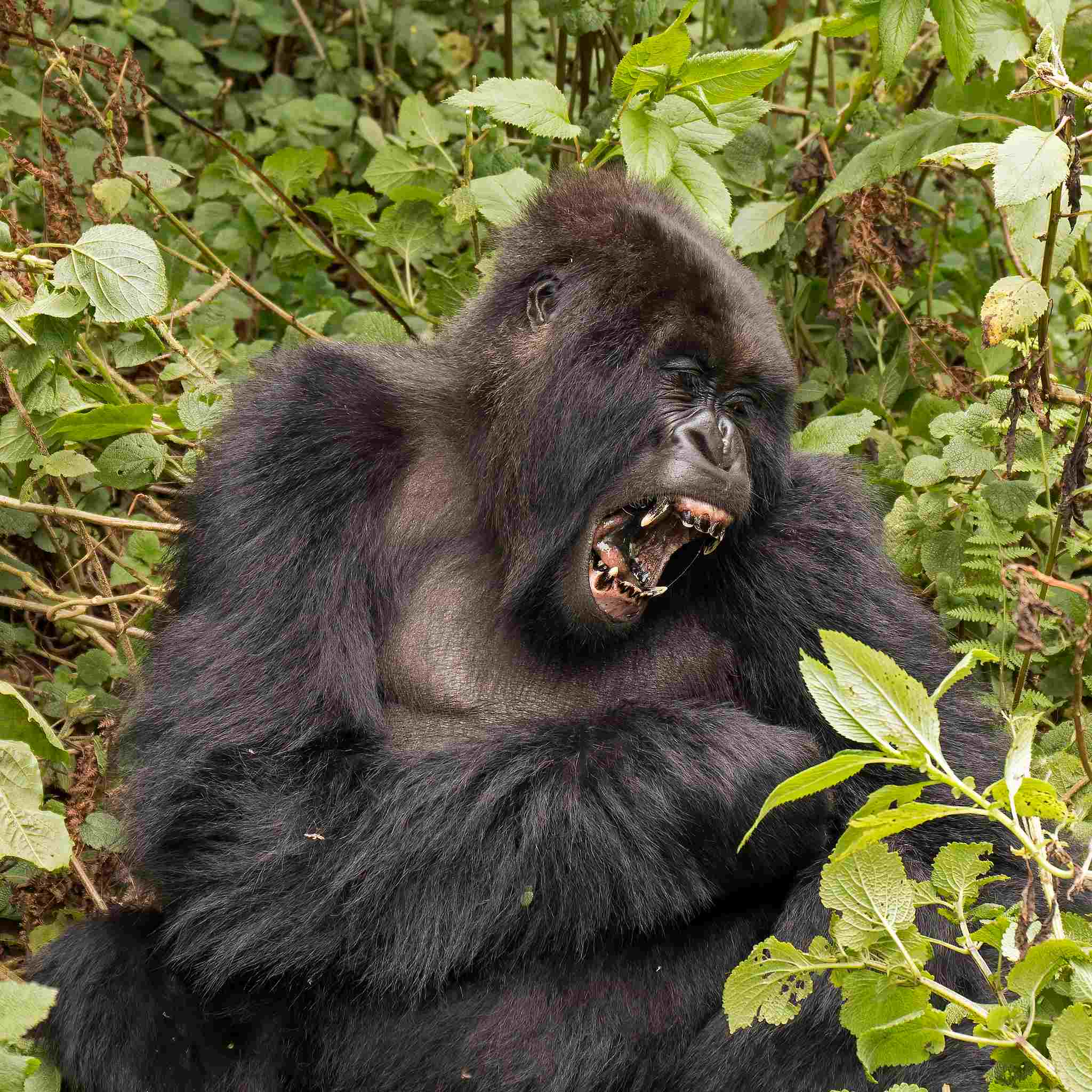
Gorilla:
Robust build with broad chest and shoulders.
Prominent sagittal crest on the skull in males.
Coarse, dark hair.
Orangutan:
Long, shaggy reddish-brown hair.
Flanged males have cheek pads and a throat pouch.
Smaller size compared to gorillas.
Comparison:
Gorillas exhibit a more robust physique, while orangutans have distinctive long, shaggy hair and facial features in mature males.
Ecological Implications:
Differences in appearance are adaptations to their respective habitats, with gorillas’ robustness suited for terrestrial life, and orangutans’ adaptations for arboreal living.
3. Gorilla Vs Orangutan Size:
Gorilla:
Males: 1.7 to 1.8 meters (5.6 to 5.9 feet) tall when standing.
Females: Generally smaller than males.
Orangutan:
Larger than females, males can reach up to 1.4 meters (4.6 feet).
Comparison:
Gorillas, especially males, tend to be larger in overall size compared to orangutans.
Ecological Implications:
Size differences contribute to distinct ecological niches, with gorillas favoring ground-based activities and orangutans thriving in trees.
4. Weight:
Gorilla:
Males: 140 to 200 kg (310 to 440 lbs).
Females: 68 to 113 kg (150 to 250 lbs).
Orangutan:
Males: 50 to 90 kg (110 to 200 lbs).
Females: 30 to 50 kg (66 to 110 lbs).
Comparison:
Gorillas are generally heavier than orangutans, especially in males.
Ecological Implications:
Weight variations align with their specific ecological roles; gorillas as ground-dwellers benefit from robust builds, while orangutans’ lighter weight is advantageous for navigating trees.
5. Bite Force:

Gorilla:
Powerful jaw muscles, adapted for crushing vegetation.
Orangutan:
Strong bite for consuming a variety of fruits and vegetation.
Comparison:
Gorillas have a formidable bite force, especially adapted for their herbivorous diet.
Ecological Implications:
Bite force reflects adaptations to their respective diets, with gorillas emphasizing vegetation consumption and orangutans incorporating a broader range of foods.
6. Physical Offensive Advantages:
Gorilla:
Powerful arm strength for aggressive displays.
Dominance displayed through chest-beating and vocalizations.
Orangutan:
Flanged males exhibit pronounced cheek pads, emphasizing dominance.
Can display aggression through vocalizations and physical posturing.
Comparison:
Gorillas showcase dominance through physical displays and vocalizations, while orangutans’ dominance is signaled through distinct facial features in mature males.
Ecological Implications:
These offensive advantages are adaptations to establish and maintain social hierarchy within their respective habitats.
7. Physical Defensive Advantages:
Gorilla:
Powerful physique serves as a deterrent against predators.
Group living provides collaborative defense against threats.
Orangutan:
Agile in trees, providing escape routes from ground predators.
Solitary lifestyle reduces the need for extensive defensive strategies.
Comparison:
Gorillas rely on physical strength and group cooperation for defense, while orangutans leverage their arboreal agility.
Ecological Implications:
Defensive strategies align with their habitat requirements, with gorillas emphasizing group defense and orangutans relying on their ability to navigate trees for safety.
8. Speed:
Gorilla:
Limited ground speed; prefer walking on all fours.
Orangutan:
More agile in trees; slower on the ground.
Comparison:
Gorillas are not known for their speed, especially on the ground, while orangutans exhibit greater agility in trees.
Ecological Implications:
Differences in speed reflect their respective habitats; gorillas’ preference for the ground and orangutans’ arboreal lifestyle.
9. Agility:
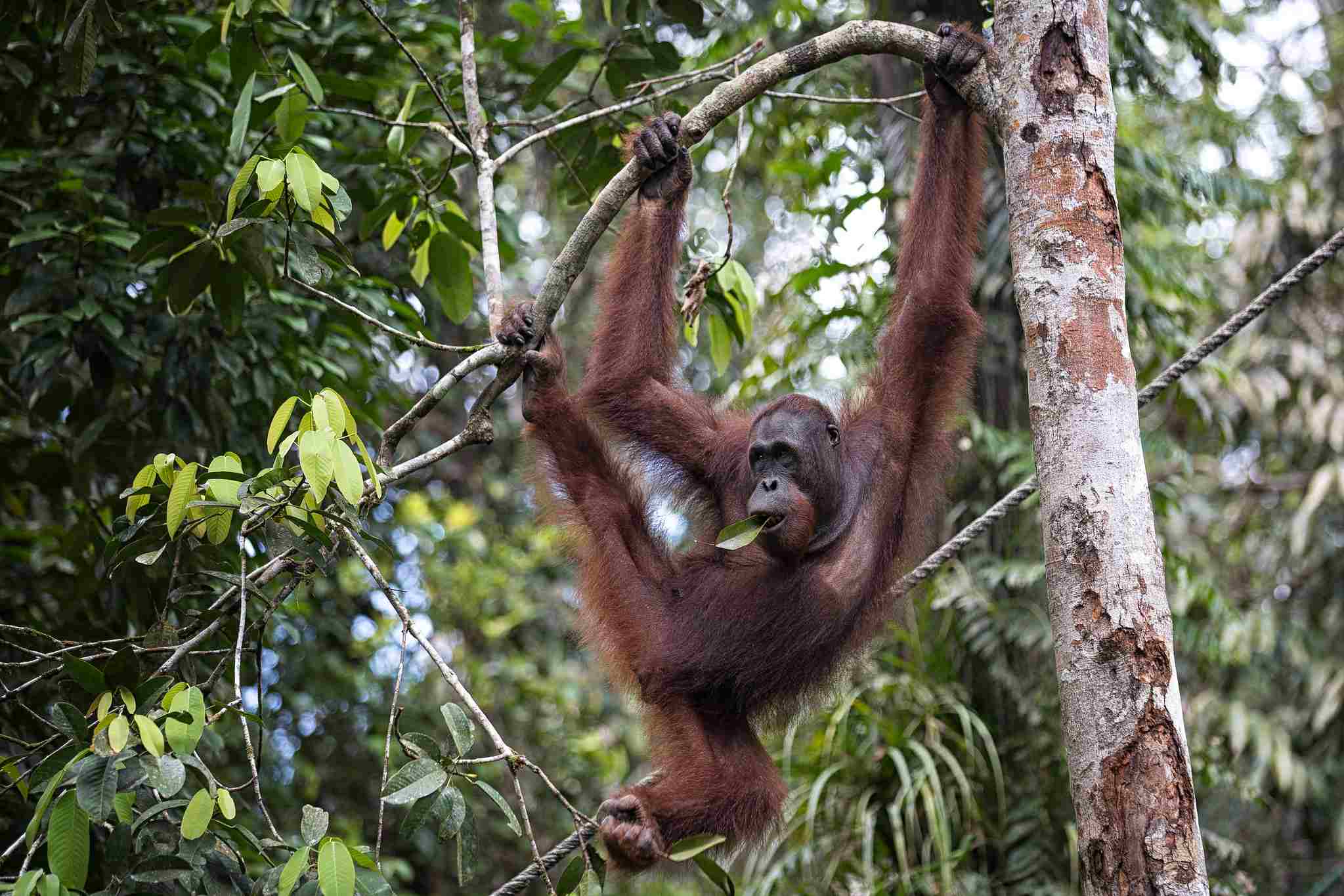
Gorilla:
Adapted for terrestrial locomotion; limited agility in trees.
Orangutan:
Exceptional agility in trees; strong limb flexibility.
Comparison:
Gorillas are less agile in trees, focusing on ground-based activities, whereas orangutans excel in navigating the canopy.
Ecological Implications:
These differences in agility correspond to their distinct ecological roles, with gorillas emphasizing terrestrial movement and orangutans excelling in arboreal environments.
10. Overall Physical Capacity (Gorilla Vs Orangutan Strength):
Gorilla:
Exceptional strength and physical power.
Well-adapted for ground-based activities.
Orangutan:
Agile climbers with strong limb flexibility.
Built for an arboreal lifestyle.
Comparison:
Gorillas excel in ground-based strength and power, while orangutans showcase remarkable agility in trees.
Ecological Implications:
Their overall physical capacity aligns with the demands of their respective habitats, reflecting specialization for either terrestrial or arboreal living.
11. Habitat Preference(s):
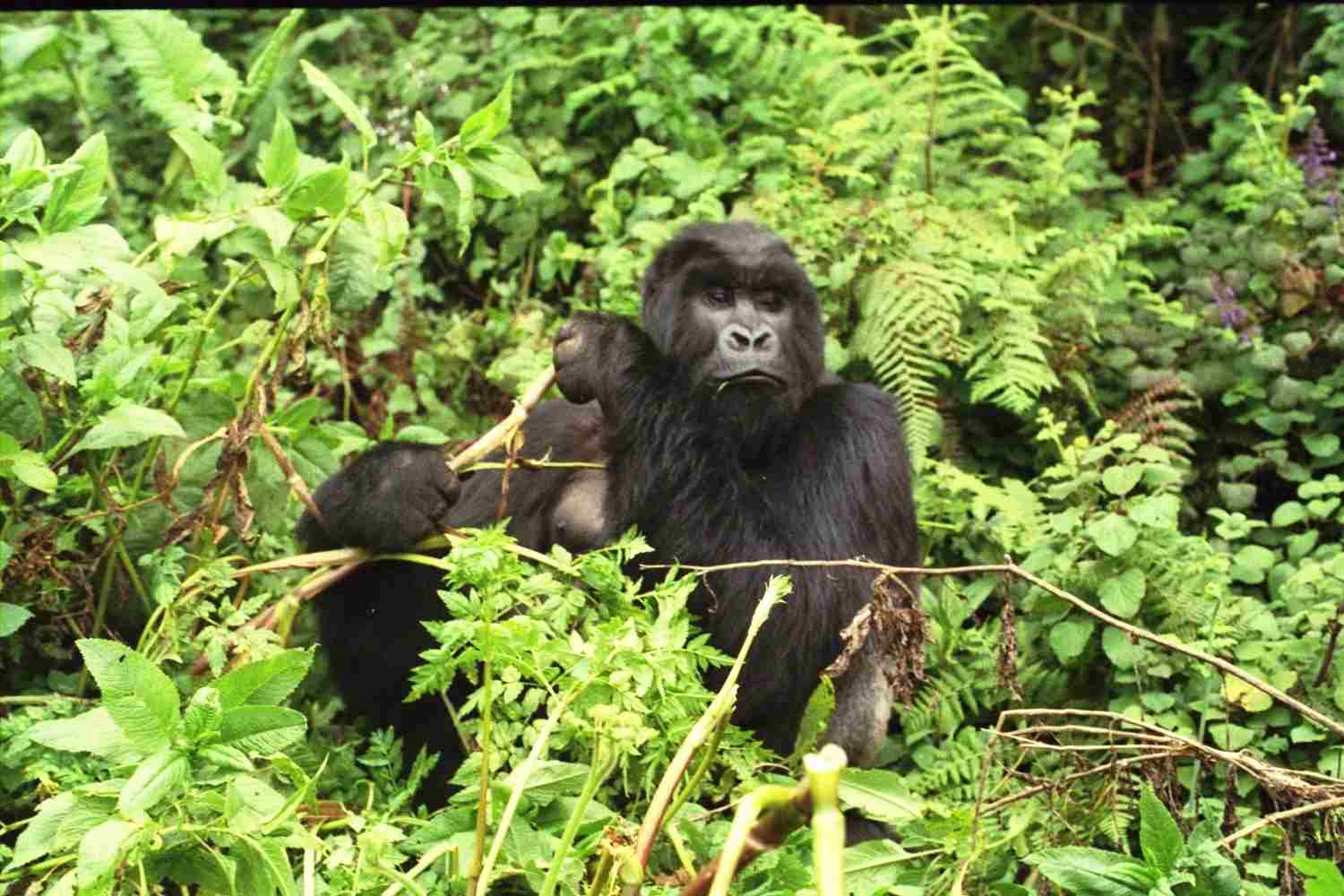
Gorilla:
Primary habitats include dense forests and lowland swamps.
Prefer terrestrial environments but also climb trees.
Orangutan:
Primarily found in tropical rainforests.
Arboreal lifestyle, spending the majority of time in trees.
Comparison:
Gorillas have a broader habitat range, including terrestrial and arboreal areas, while orangutans predominantly inhabit trees.
Ecological Implications:
Habitat preferences reflect their adaptations and specialized niches within their ecosystems.
12. Tracks:
Gorilla:
Distinctive handprints and footprints.
Toe arrangement reflects their knuckle-walking locomotion.
Orangutan:
Handprints and footprints may be present in trees.
Toe arrangement adapted for gripping branches.
Comparison:
Gorilla tracks exhibit characteristics of knuckle-walking, while orangutans leave prints indicative of their arboreal locomotion.
Ecological Implications:
Tracking methods can aid researchers in studying their locomotion patterns and understanding their behavior within their habitats.
13. Lifespan:
Gorilla:
Typically 35 to 50 years in the wild.
Longer lifespan observed in captivity.
Orangutan:
35 to 45 years in the wild.
Similar or longer lifespans in captivity.
Comparison:
Both species have relatively long lifespans, with variations influenced by factors such as habitat, health, and captivity.
Ecological Implications:
Lifespan variations may be influenced by environmental stressors, availability of resources, and human-induced factors, impacting their roles in ecosystem dynamics.
14. Mode of Feeding:
Gorilla:
Primarily herbivorous, consuming leaves, stems, and fruits.
Exhibits selective feeding habits based on seasonal availability.
Orangutan:
Omnivorous, with a diet comprising fruits, leaves, insects, and occasional small vertebrates.
Seasonal variations in diet influenced by fruit availability.
Comparison:
Gorillas are predominantly herbivorous, while orangutans have a more varied diet that includes both plant material and occasional animal prey.
Ecological Implications:
Dietary differences contribute to their roles as seed dispersers and shape their interactions with the plant community in their habitats.
15. Social Behavior:
Gorilla:
Live in cohesive family groups led by a dominant silverback.
Complex social structure with communication through vocalizations, body language, and grooming.
Orangutan:
Generally solitary, with occasional social interactions, especially between mothers and offspring.
Males may exhibit more social behaviors, especially during periods of overlapping territories.
Comparison:
Gorillas have a more pronounced and complex social structure, while orangutans are largely solitary.
Ecological Implications:
Social behaviors are adaptations to their respective ecological niches, with gorillas emphasizing group dynamics and orangutans relying more on solitary lifestyles.
16. Mode of Reproduction:
Gorilla:
Polygynous mating system, with dominant silverbacks mating with multiple females.
Females have a relatively long interbirth interval.
Orangutan:
Generally solitary, with mating encounters occurring between males and females.
Females have a lengthy interbirth interval, typically around 8 years.
Comparison:
Gorillas exhibit a more structured polygynous mating system, while orangutans engage in more solitary mating encounters.
Ecological Implications:
Reproductive strategies align with their social structures and ecological adaptations, influencing population dynamics and genetic diversity.
17. Parental Behavior:
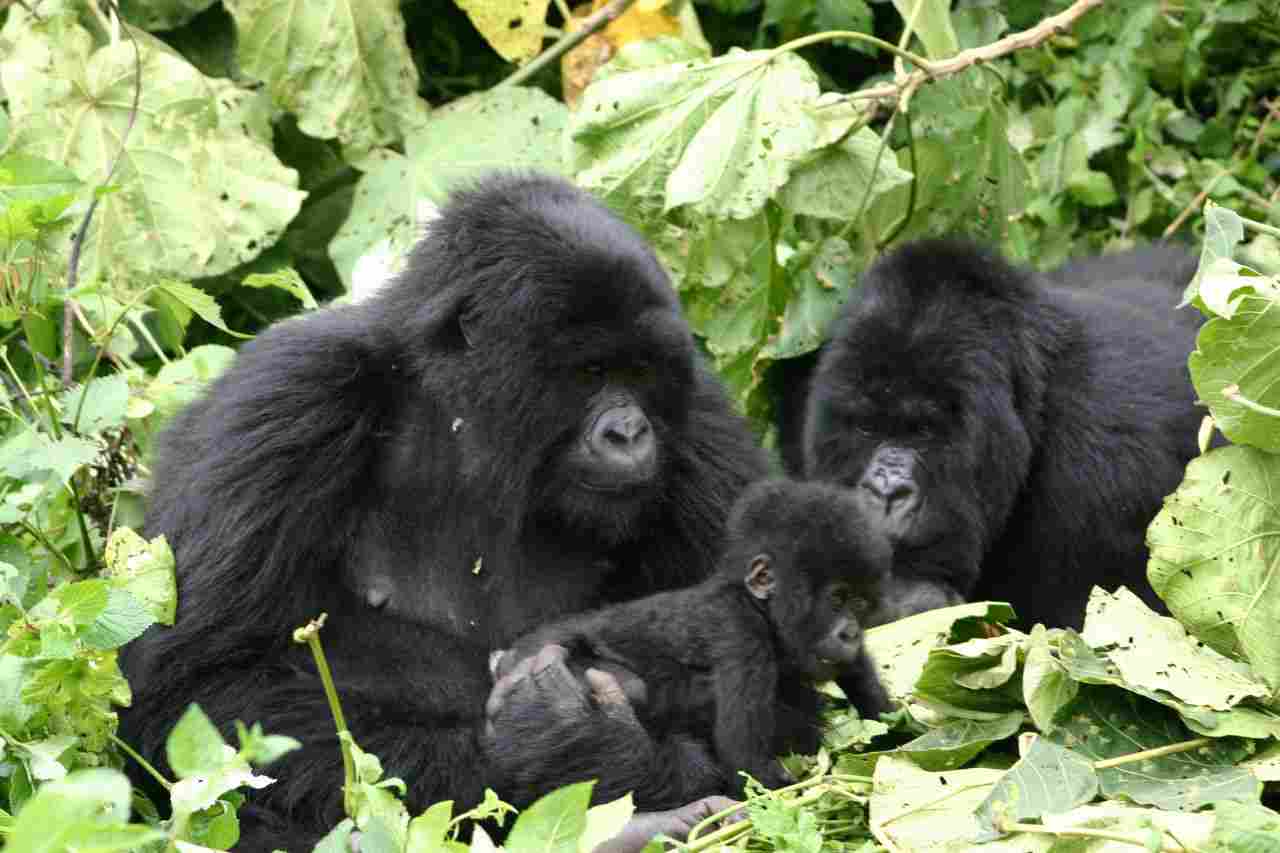
Gorilla:
Strong maternal care, with females nurturing and protecting their offspring.
Silverbacks provide protection and play a role in maintaining group cohesion.
Orangutan:
Female orangutans are the primary caregivers, with mothers nurturing and protecting their young.
Limited paternal involvement; males have little role in parenting.
Comparison:
Both species exhibit strong maternal care, but the involvement of adult males differs, with silverbacks playing a more active role in gorilla groups.
Ecological Implications:
Parental behaviors contribute to the survival and social dynamics of their offspring, impacting population stability within their respective habitats.
18. Proximity to Human-Inhabited Areas:
Gorilla:
Some populations may inhabit regions near human settlements.
Vulnerable to habitat encroachment and human-wildlife conflict.
Orangutan:
Generally found in remote and less populated tropical rainforests.
Habitat loss due to human activities poses a significant threat.
Comparison:
Gorillas may experience closer proximity to human-inhabited areas, leading to increased risks, whereas orangutans often inhabit more remote regions.
Ecological Implications:
Human encroachment poses threats to both species, but the degree of proximity impacts the nature and intensity of these threats.
19. Behavior Toward Humans:
Gorilla:
Typically shy and non-aggressive towards humans.
May exhibit defensive behaviors if they feel threatened.
Orangutan:
Generally avoid human contact; solitary nature contributes to minimal interactions.
Can become aggressive if they feel threatened.
Comparison:
Both species tend to avoid direct interaction with humans, but orangutans’ solitary nature may result in less frequent encounters.
Ecological Implications:
Their behavior towards humans influences the level of human-wildlife conflict and conservation efforts required to protect these species.
20. Danger Posed to Humans:
Gorilla:
Low danger to humans; rare cases of aggression.
Typically non-threatening unless provoked or threatened.
Orangutan:
Low danger; typically avoid humans.
Aggression may occur if they perceive a threat to themselves or their offspring.
Comparison:
Both species generally pose low danger to humans, but individual behaviors can vary based on circumstances.
Ecological Implications:
The low danger they pose to humans may impact conservation efforts by fostering positive attitudes towards their protection.
21. Associated Precautions:
Gorilla:
Conservation efforts focus on habitat protection and minimizing human disturbances.
Tourism guidelines emphasize maintaining a safe distance and avoiding direct eye contact.
Orangutan:
Conservation strategies include habitat preservation and efforts to reduce illegal hunting.
Similar tourism guidelines to gorillas, emphasizing minimal disturbance.
Comparison:
Conservation measures for both species emphasize habitat protection and responsible tourism to minimize human impact.
Ecological Implications:
Implementing precautions is crucial for ensuring the well-being of these species and their habitats, contributing to overall conservation success.
22. Conservation Status:
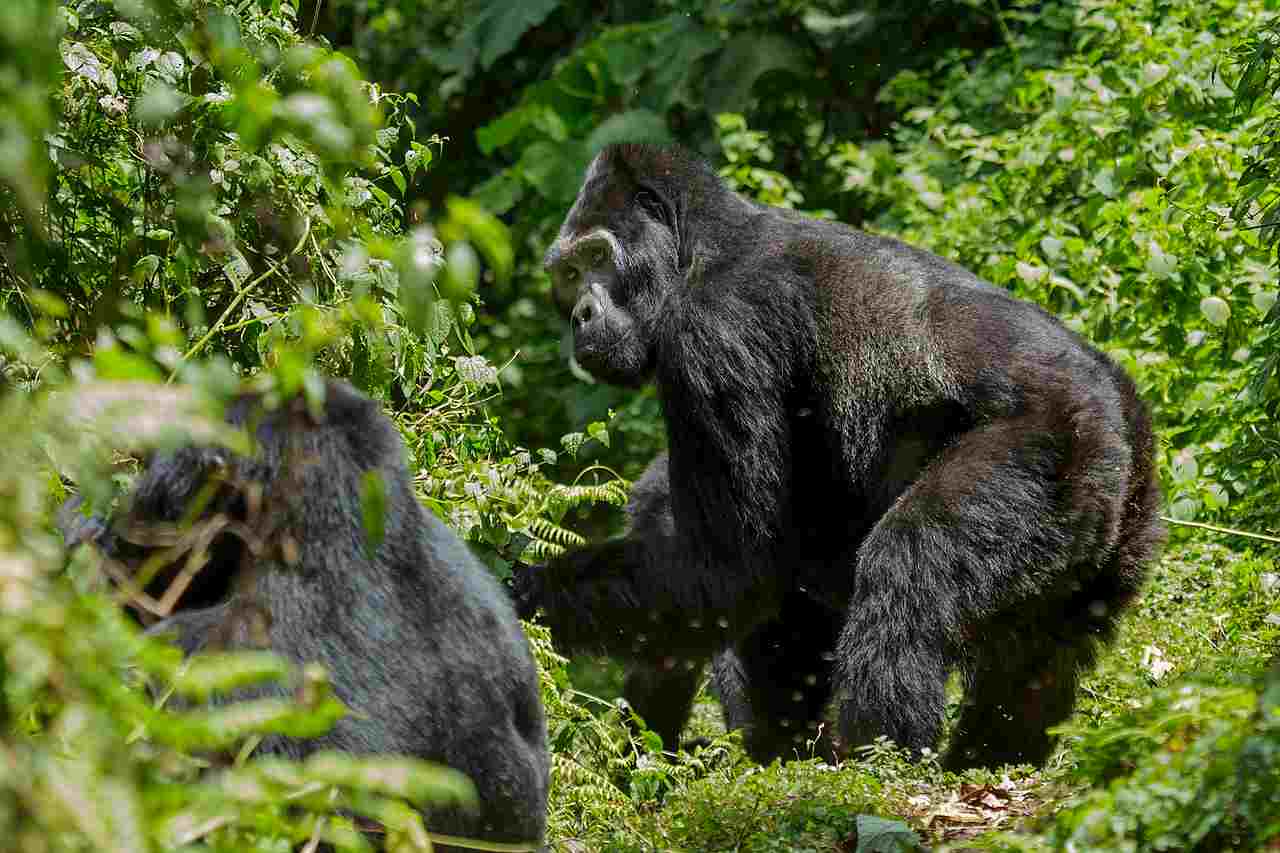
Gorilla (Genus: Gorilla):
Eastern Gorilla (Gorilla beringei):
Mountain Gorilla (Gorilla beringei beringei): Endangered (IUCN Red List).
Eastern Lowland Gorilla (Gorilla beringei graueri): Endangered (IUCN Red List).
Western Gorilla (Gorilla gorilla):
Western Lowland Gorilla (Gorilla gorilla gorilla): Endangered (IUCN Red List).
Cross River Gorilla (Gorilla gorilla diehli): Critically Endangered (IUCN Red List).
Details:
Gorillas face threats from habitat destruction, poaching, and diseases such as Ebola.
Conservation efforts involve protected area management, community engagement, and research for sustainable practices.
Orangutan (Genus: Pongo):
Sumatran Orangutan (Pongo abelii): Critically Endangered (IUCN Red List).
Bornean Orangutan (Pongo pygmaeus): Endangered (IUCN Red List).
Details:
Orangutans are severely affected by habitat loss due to palm oil plantations, logging, and illegal pet trade.
Conservation strategies include reforestation, sustainable palm oil initiatives, and community involvement for habitat protection.
Comparison:
Both gorillas and orangutans face endangerment, but the primary threats differ. Gorillas face challenges from diseases like Ebola, while orangutans are particularly affected by habitat destruction for palm oil.
Ecological Implications:
The conservation status reflects the impact of human activities on their habitats and underscores the importance of preserving these species for biodiversity.
Both species play crucial roles in seed dispersal and maintaining the health of their ecosystems, making their conservation vital for overall ecological balance.
Conclusion:
I. Similarities:
Taxonomy: Both gorillas and orangutans belong to the Hominidae family, with gorillas in the Gorilla genus and orangutans in the Pongo genus.
Habitat Threats: Both face ecological threats due to habitat loss from human activities, impacting their populations and survival.
II. Differences:
Social Structure: Gorillas exhibit a complex social structure with family groups led by dominant silverbacks, while orangutans are generally solitary with occasional social interactions.
Feeding Habits: Gorillas are primarily herbivorous, emphasizing leaves and stems, whereas orangutans have a more varied omnivorous diet, including fruits and occasional animal prey.
Mating Systems: Gorillas follow a polygynous mating system with dominant silverbacks mating with multiple females, while orangutans engage in more solitary mating encounters.
Parental Involvement: Gorilla silverbacks play a more active role in parenting, contributing to the protection and cohesion of family groups, while male orangutans have minimal involvement in parenting.
Ecological Implications:
The differences in social behavior, diet, and reproductive strategies align with their respective ecological niches, influencing their roles in seed dispersal, habitat dynamics, and overall ecosystem health.
Human-induced threats, such as habitat loss and proximity to human settlements, necessitate tailored conservation strategies for both species to ensure their survival and contribute to the overall biodiversity and ecological balance in their habitats.
